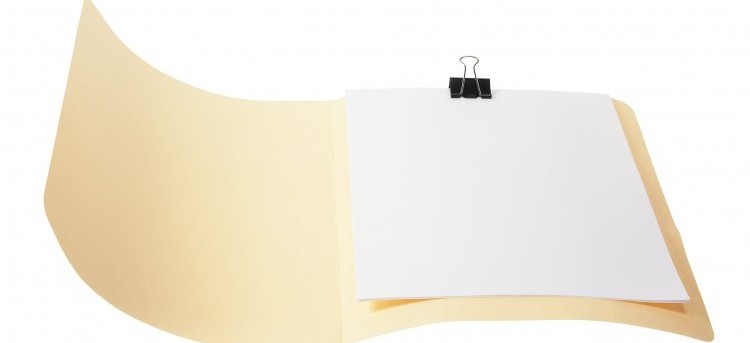You pay your bills on time, you don’t have any credit card debt, and overall, you consider yourself fairly responsible when it comes to spending. You’re ready to apply for a credit card or loan to help you get your future business off the ground and all of a sudden you hit a road block. Your request is denied and, upon further research, you find that you have thin credit file. Now what?
This is a really frustrating situation for individuals who have, to their knowledge, maintained a relatively blemish free financial life. Despite the setback, there is some good news. First of all, don’t assume that you did something wrong. This isn’t a reflection of poor decisions, accumulating debt or missed payments. Secondly, though it may take some time, it’s something you can easily address if you take the right steps.
Thin File — What Does it Mean?
Let’s take a moment and talk about the question at large. What is a thin credit file?
If you have a thin file, then the credit reporting agencies simply do not have enough information about your credit history to determine your credit score.
Your credit profile is built on the information that is transmitted from lenders or financial institutions to the major credit reporting agencies (Experian, Equifax, and TransUnion). This often includes:
- Mortgage accounts
- Student loans
- Auto loans
- Consumer credit cards
If you rent (instead of own), paid for your car outright, don’t have student debt, or have not actively used a credit card, there is little information being sent to the credit reporting agencies.
On the other hand if a significant amount of time has passed since you had an active account of any kind, any reported information may be too old or has since dropped over your credit history completely. This can also leave you with a thin credit file.
While the aforementioned is responsible for a thin credit file, there are two less frequent situations that may also create a problem:
- You’re mistakenly documented as deceased: In some bizarre cases, the credit reporting agencies may think you’re deceased. In this case you’ll need to contact the agencies or file a dispute.
- You have a split file: This could happen if you move or change your name frequently. If you’ve determined this to be the issue, you’ll need to contact the reporting agencies and request that they merge your accounts.
Fixing a Thin Credit File
Now that we know the answer to “what is a thin credit file,” we’ll discuss how you can start to build a healthy and robust credit profile.
Assuming you haven’t mistakenly been reported as deceased and aren’t dealing with a split profile, the best way to address a thin credit file is by actively developing credit. Let’s be realistic though. While a lack of a mortgage, car payment and student loan debt may contribute to a thin file, the answer isn’t to go out and buy a house, a shiny new car and get back in the classroom.
The easiest way to start building your credit is to utilize credit cards. However, there is a small catch. Without a credit score, you will most likely have a hard time getting approved for a typical credit card. If this is the case, a secured credit card can offer a feasible way to establish credit when you don’t have any.
In a nutshell, a secured credit card is one where that requires a security deposit or collateral in exchange for a credit limit. In most cases, the security deposit is equal to, or a percentage of, the total credit allowance. If you pay your bills and eventually reach a zero balance, you’ll be able to recoup the deposit upon closing the account or when the lender converts your account from secured to unsecured.
With a credit card (secured or unsecured) in hand, you’ll be able to start building or re-establishing your credit. To do this, you can regularly use your card in small, manageable increments and regularly make payments.
For example, you can make small purchases (purchases you already make, like groceries) or pay some bills (utilities) using your credit card. At or before the end of each month or billing cycle, pay the bill in full. Over time, this will help you establish healthy credit and help you free yourself from a thin credit file.
There is one important thing to keep in mind. Your goal is to build or re-establish credit, and therefore, this isn’t a time to go out and make huge or unnecessary purchases with your card. High credit utilization will not help you while rebuilding your credit. Only use your card if you are confident you can pay off the debt at the end of the month. Your credit card activities will be reported one way or another, so it’s important that you add positive history as you rid yourself of a thin file.
This article was originally written on October 12, 2015 and updated on November 20, 2019.



It looks like, according to NAV. that my credit score has gone to zero. What happened, and what can I do to fix it?
This is not correct having a “thin credit profile” I’ve had many home loans, current credit card with high limit, car loan, student loans etc. Please correct!
I have 4 credit cards and a bank loan. I have capital one,. Credit one, Total and discover credit cards and a bank loan. I thought that was enough to get a credit report.
I have a capital one credit card, a credit one card a discover card and a total credit card. I also have a loan with Southernbancorp bank. I thought that was enough to establish a credit file.
Louise – If those accounts report to your personal credit, that should be enough to establish credit. Have you checked your scores? Here’s a list of 150+ places to get your credit scores for free. Let us know if you have additional questions after checking your scores.
I checked my score on credit wise, credit sesame and quicken loan. They are all reporting everything but the capital one card. I also have a loan at Southernbancorp where I did some work on my house. I have Discover, Credit one, Total and capital one cards. Discover has a 2000 limit, capital one a 1300 limit, credit one a 700 dollar limit and Total a 300 limit.